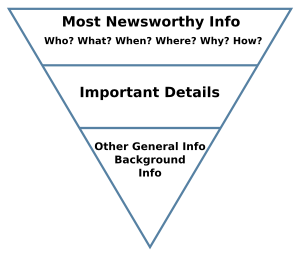Learning Centre
Writing Best Practices
When writing and reviewing your web content make sure to follow these best practices:
- Check your readability statistics
- Create an editing checklist
- Write accessible content
There are also techniques that you can use in your content writing to ensure content is accessible and relevant for your readers. Below, we have listed a few tips.
KISS method
The KISS method stands for 'Keep it simple and succinct'. When writing your web content, you want to choose your words wisely. If a word doesn't add to the information or keep the sentence grammatically sound, cut it out.
Choose words that are short and simple. Long and complex words are difficult for readers with cognitive disabilities, those with dyslexia, or those who might use English as their second or third language. Look for shorter, simpler alternatives when editing your content.
By using the KISS method, you can get your readers the relevant information faster.
Headings
Headings are a great tool for guiding your reader through your content, and making sure your content remains accessible. Headings should be straightforward and written in sentence style, with only the first letter or the first word be capitalized. Headings should follow numerically, starting at Heading level 2 for each new topic. You should never publish a page without having headings.
Bullet Lists
Bullet lists are great tools for creating hot spots in your content and making sure your content remains accessible. You can use bullet list to break up large chunks of texts and highlight key points.
Try to keep your lists to 10 bullets or less. If you have more than 10 bullet points, review your list and see if there is a better way to split up the bullets.
Tone and language
Write in a conversational, friendly tone and in the active voice. Include your organization's full name when first mentioned but after that, you should write in the first-person.
Be sure to introduce the full term for acronyms and abbreviations on each page where they're used. Once the full term has been introduced on a page, you can use the acronym or abbreviation for the rest of that page.
Be objective
Remember that you're writing to be helpful and provide information. You should avoid any words or sentences that are unclear. Use specific terms that communicate meaning to the visitor.
Be careful with using too many adjectives and adverbs. Often they let a reader know how you feel about a topic instead of providing helpful information. If a program is “truly engaging” or an “amazing opportunity,” you should write more and explain why. Adjectives should not stand in for meaningful content.
Inverted pyramid
The inverted pyramid is a technique that will help you prioritize and focus the content on your page. Avoid the essay style of writing. Instead, you'll want to start the page with the most useful information, focus on key messages, and avoid introductory paragraphs.

Need to know
Start with what the user needs to know at the very top of a page. What is the main thing they would be coming to your page for and what information do they need to complete their goal? This information should go directly to the top of the page (e.g., for an event page start with what the event is, where it is, and when it is).
If you're not sure what the user needs, thinking about answering these five questions: who, what, where, when, why and how.
Tip: imagine that you're speaking to someone who's asking you for help. What would say right away to answer their questions and help them complete their goals?
Want to know
After you've provided everything that the visitor needs to know, you can include other important details (e.g., rules, regulations, policies and next steps).
Don't lead with rules and regulations as a visitor is likely to skip over them as they try to find need to know information. If you start with the most useful, need-to-know information, a visitor is more likely to relax and keep reading the rest of the content on the page.
Might like to know
End a page with general and background information. You can stop after you've written your important details, but if you'd like to include background and more historical information (e.g., funding, sponsorships, history, improvements, etc.), it should be at the bottom of a page. A visitor that's interested in that information will find and read it.
Use your sitemap
Check the sitemap while you're writing. You might have information that's “might like to know” on one page but is more “want” or “need” to know on another page. You can briefly mention it on a page and hyperlink over to the page where it's a better fit. You shouldn't repeat information across different pages of your website.
Contact Us
GHD Digital Support
Primary +1-866-691-5528
Secondary +1-519-884-2476
Submit Online
Need Help?



